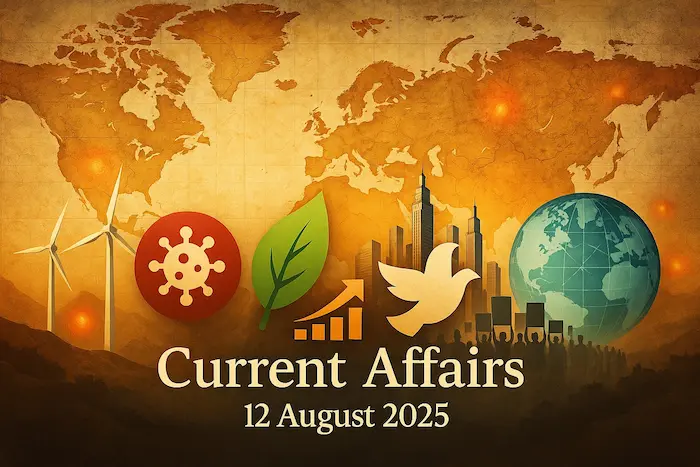1. India’s Lion Population Rises to 891 – Environment
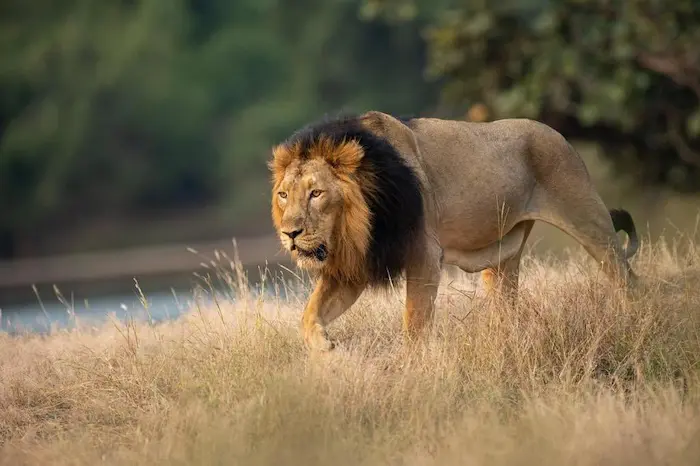
Why in News?
- India’s Asiatic lion population increased 32.2% from 674 (2020) to 891 (2025).
- Data released ahead of World Lion Day (10 August).
About the Asiatic Lion
- Scientific name: Panthera leo leo.
- Endemic Range: Only found in India.
- Historical Range: West Asia & Middle East — now extinct outside India.
- Current Range: Gir National Park & surrounding areas in Saurashtra, Gujarat.
Conservation Status
- IUCN Red List: Endangered.
- CITES: Appendix I.
- Wildlife (Protection) Act, 1972: Schedule I.
2025 Census Highlights
- Total lions: 891 (+32.2% from 2020).
- Decadal Growth: +70.36% since 2015 (from 523 lions).
- Adult Females: 330 (+26.9% from 2020).
- Satellite Populations: 497 lions in 9 locations (new groups in Barda WLS, Jetpur, Babra-Jasdan).
- Corridor Records: 22 lions sighted for first time.
Regional Growth:
- Mitiyala WLS: +100%
- Bhavnagar Mainland: +84%
- South Eastern Coast: +40%
Declines:
- Girnar WLS: -4%
- Bhavnagar Coast: -12%
Significance of the Increase
- Biodiversity Indicator: Healthy predator population reflects strong prey base and habitat management.
- Conservation Model: Gujarat’s lion conservation strategy is globally recognised (community involvement, corridor protection).
- Tourism Boost: Supports eco-tourism and local livelihoods.
Challenges Ahead
- Disease risks (e.g., Canine Distemper Virus outbreaks).
- Habitat fragmentation due to infrastructure projects.
- Need for secondary habitats to avoid overpopulation in Gir.
Exam Connect – Possible Questions
Prelims
1. Consider the following statements about Asiatic lions:
1. They are found in India, Pakistan, and Nepal.
2. They are listed in Schedule I of the Wildlife (Protection) Act, 1972.
3. Their IUCN status is Endangered.
Which of the statements given above is/are correct?
A. 1 and 2 only
B. 2 and 3 only
C. 1 and 3 only
D. 1, 2 and 3
Answer: B. 2 and 3 only
Explanation: Asiatic lions are found only in India, not in Pakistan or Nepal; they are Schedule I species under WPA, and are classified as Endangered by IUCN.
2. Which of the following protected areas is NOT part of the Asiatic lion’s range?
A. Gir National Park
B. Mitiyala Wildlife Sanctuary
C. Barda Wildlife Sanctuary
D. Kaziranga National Park
Answer: D. Kaziranga National Park
Explanation: Kaziranga NP is in Assam and is famous for the one-horned rhinoceros, not Asiatic lions.
Mains
1. Discuss the factors that have contributed to the rise in the Asiatic lion population in Gujarat. What challenges remain in ensuring their long-term survival?
2. Evaluate the role of community participation and habitat corridor management in large carnivore conservation in India, with reference to the Asiatic lion.
2. Dard-Shin Tribe: Cultural Heritage and Current Status – Indian Society
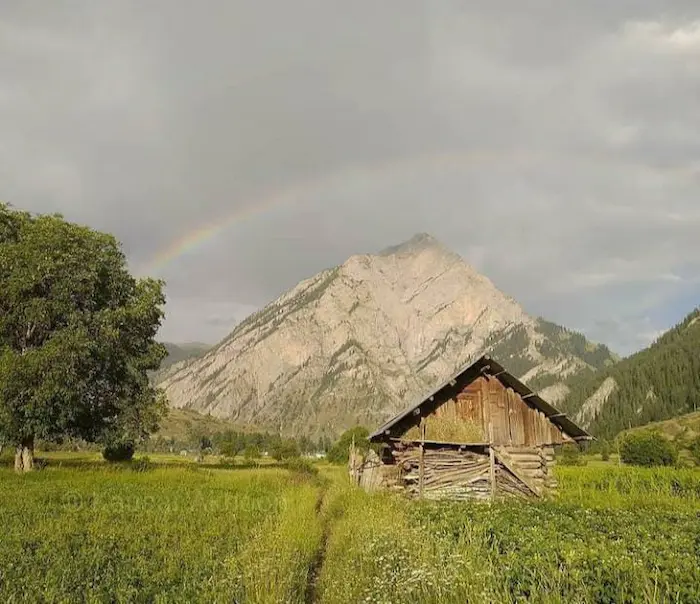
Why in News?
- Activists from the Dard-Shin community have begun documenting their heritage to preserve linguistic and cultural traditions.
- Highlights the tribe’s historical role and current socio-cultural challenges.
Origins & Historical Background
- Ancient Indo-Aryan group tracing migrations between 2000–1500 BCE.
- Region: Dardistan — includes Chitral, Yasin, Gilgit, Chilas, Bunji, Gurez Valley, Ladakh, northern Afghanistan.
- Historical mentions:
- Greek historians (Herodotus, Ptolemy, Pliny).
- Kalhana’s Rajatarangini.
- Political role: The Chak dynasty (Dard origin) ruled Kashmir for 25+ years in the 16th century before Mughal takeover.
Present Demographics & Location
- Population: ~48,440 (2011 Census).
- Primary areas: Gurez (Bandipora, J&K), with smaller clusters in Drass, Tulail, Chanderkote.
Language & Cultural Identity
- Language: Shina (distinct from Kashmiri; Indo-Aryan family).
- Among last Himalayan groups preserving original language traditions.
Cultural Significance
- Historic role:
- Gurez Valley as Silk Route link between Kashmir, Central Asia, and Tibet.
- Traditions:
- Elaborate marriage rituals.
- Woolen attire suited for high-altitude climate.
- Burning juniper leaves for land purification.
- Architecture: Wooden houses blending ancient Himalayan style with modern adaptations.
- Oral history: Migration legends (e.g., Gilgit to Ladakh).
- Religious beliefs: Primarily Islam & Buddhism; remnants of animism from cultural exchanges.
Current Challenges
- Language endangerment due to assimilation and migration.
- Economic vulnerability from isolation and limited development.
- Climate change affecting high-altitude livelihood patterns.
- Cultural dilution from modern influences and tourism pressures.
Exam Connect – Possible Questions
Prelims
1. Which of the following statements about the Dard-Shin tribe is/are correct?
1. They speak the Shina language, which is part of the Indo-Aryan family.
2. They are found only in Ladakh and Himachal Pradesh.
3. The Chak dynasty, of Dard origin, once ruled Kashmir.
Options:
A. 1 and 2 only
B. 1 and 3 only
C. 2 and 3 only
D. 1, 2 and 3
Answer: B. 1 and 3 only
Explanation: They are found mainly in J&K (Gurez, Drass, Tulail), not only in Ladakh/Himachal; statements 1 & 3 are correct.
2. The Gurez Valley, historically linked with the Dard-Shin tribe, served as:
A. A Mughal military base in Kashmir
B. A major Silk Route link between Kashmir, Central Asia, and Tibet
C. A colonial-era tea plantation hub
D. The site of the Anglo-Sikh Treaty negotiations
Answer: B. A major Silk Route link between Kashmir, Central Asia, and Tibet
Explanation: Gurez Valley historically connected trade routes between Kashmir, Central Asia, and Tibet.
Mains
1. Discuss the historical and cultural significance of the Dard-Shin tribe in the context of India’s Himalayan societies. How can their heritage be preserved in the face of modernisation?
2. Examine the role of language preservation in sustaining tribal identity, with reference to the Dard-Shin community’s efforts to document the Shina language.
3. Nominations to J&K Legislative Assembly – Polity
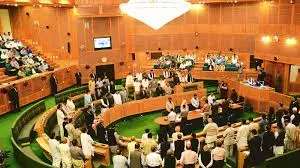
Why in News?
- Union Ministry of Home Affairs (MHA) clarified that Lieutenant-Governor (L-G) of J&K can directly nominate five members to the Legislative Assembly without advice from the elected government.
Legal & Constitutional Basis
- Governed by J&K Reorganisation Act, 2019 (as amended in 2023).
- Relevant provisions: Sections 15, 15A, 15B.
- Nomination powers are statutory, not requiring the council of ministers’ advice.
- Similar to nomination provisions in other UTs (e.g., Puducherry).
Assembly Composition (Post-Reorganisation)
- Elected Members: 114 seats (currently operational seats are less; 24 PoJK seats vacant).
- Nominated Members (5 seats):
- 2 women (if under-represented).
- 2 Kashmiri migrants (including 1 woman).
- 1 from PoJK community.
- Nominated members count towards total sanctioned strength.
Background Context
- Election mode: Members elected directly from single-member constituencies.
- Comparison: Earlier, Governors in states could nominate 1 Anglo-Indian member (abolished by 104th Constitutional Amendment, 2019).
- Rights of nominated members: Same as elected members, except they do not have a direct electoral mandate.
Purpose of Nominations
- Ensure representation for:
- Marginalised groups.
- Displaced communities (Kashmiri migrants, PoJK residents).
- Women (gender balance).
Significance
- Reflects asymmetric federalism in India’s polity.
- Ensures inclusive representation in conflict-affected and demographically sensitive regions.
- Raises questions on executive discretion vs. democratic mandate in nomination powers.
Exam Connect – Possible Questions
Prelims
1. Under the J&K Reorganisation Act, the L-G can nominate which of the following to the Legislative Assembly?
1. Women (if under-represented)
2.Representatives of the Anglo-Indian community
3. Kashmiri migrants
4. Members from the PoJK community
Select the correct answer:
A. 1, 2 and 3 only
B. 1, 3 and 4 only
C. 1, 2 and 4 only
D. 1, 2, 3 and 4
Answer: B. 1, 3 and 4 only
Explanation: Anglo-Indian nomination provision was abolished in 2019; other categories are explicitly provided under the Act.
bly is:
2. The power of the Lieutenant-Governor of J&K to nominate members to the Assembly is:
A. A constitutional function under Article 239AA
B. A statutory function under the J&K Reorganisation Act
C. Derived from the Representation of the People Act, 1950
D. A residual power under Article 248
Answer: B. A statutory function under the J&K Reorganisation Act
Explanation: It is a statutory function under Sections 15, 15A, and 15B of the J&K Reorganisation Act.
Mains
1. Discuss the constitutional and statutory framework governing nominations to the J&K Legislative Assembly. How do these provisions ensure representation for marginalized groups?
2. Critically examine the implications of granting the Lieutenant-Governor independent powers to nominate members to the J&K Assembly without the advice of the elected government.
4. Barda Wildlife Sanctuary – Environment

Why in News?
- World Lion Day 2025 celebrations held at Barda Wildlife Sanctuary, Devbhumi Dwarka district, Gujarat.
- Focus on Barda’s role as a potential second home for the Asiatic lion.
Key Facts
| Aspect | Details |
|---|---|
| Location | Gujarat, India — Devbhumi Dwarka district |
| Rivers | Bileshvary & Joghri |
| Dams | Khambala & Fodara |
| Flora | ~650 species — Rayan, Babul, Ber, Jamun, Amli, Gorad, Bamboo, Dhav, Dhudhlo |
| Fauna | Leopards, Hyenas, Wolves, Wild Boars, Jackals, Blue Bulls, Spotted Eagle, Crested Hawk Eagle |
| Tribal Communities | Maldharis, Bharvads, Rabaris, Gadhvis |
| Gir-Barda Project | Initiated in 1979 to develop Barda as a second habitat for Asiatic lions |
| Asiatic Lion Status | IUCN: Vulnerable; WPA 1972: Schedule I |
Ecological Importance
- Acts as biodiversity hotspot in Saurashtra region.
- Habitat diversification reduces overcrowding risks in Gir National Park.
- Presence of rivers & dams supports perennial water sources for wildlife.
Conservation Significance
- Strategic for Asiatic Lion population dispersal.
- Rich avian diversity, including rare raptors, enhances ecological monitoring value.
- Supports coexistence models with resident pastoralist tribes.
Challenges
- Human–wildlife conflict due to grazing & agriculture.
- Water stress during summers despite dams.
- Need for improved prey base before lion relocation.
Exam Connect – Possible Questions
Prelims
1. Which of the following statements about Barda Wildlife Sanctuary is/are correct?
1. It is located in the Devbhumi Dwarka district of Gujarat.
2. It is part of the Gir-Barda Project to establish a second home for the Asiatic lion.
3. It contains the Bileshvary and Joghri rivers.
Options:
A. 1 and 2 only
B. 2 and 3 only
C. 1 and 3 only
D. 1, 2 and 3
Answer: D. 1, 2 and 3
Explanation: All statements are correct; Barda is in Gujarat, part of the Gir-Barda Project, and has Bileshvary & Joghri rivers.
2. The Asiatic lion is currently listed as:
A. Endangered in the IUCN Red List and Schedule II of WPA 1972
B. Vulnerable in the IUCN Red List and Schedule I of WPA 1972
C. Vulnerable in the IUCN Red List and Schedule II of WPA 1972
D. Endangered in the IUCN Red List and Schedule I of WPA 1972
Answer: B. Vulnerable in the IUCN Red List and Schedule I of WPA 1972
Explanation: Asiatic lion is Vulnerable in IUCN Red List, and Schedule I under WPA 1972.
Mains
1. Discuss the ecological and strategic importance of Barda Wildlife Sanctuary in the conservation of the Asiatic lion.
2. Examine the challenges of establishing a second habitat for large carnivores in India, with reference to the Gir-Barda Project.
5. Language Lessons and the National Education Policy 2020 – Polity
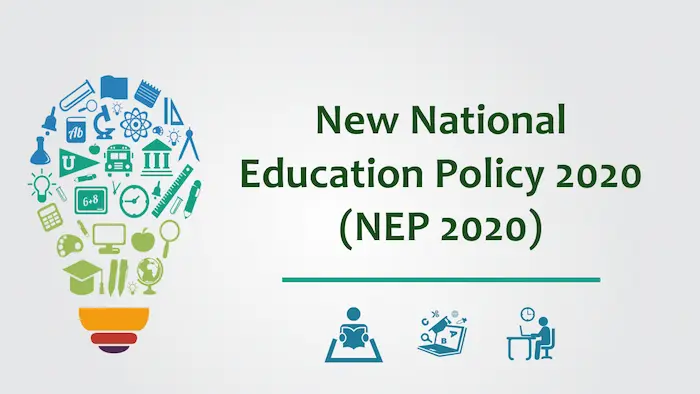
Why in News?
- NEP 2020 seeks to align India’s education system with SDG-4 (Quality Education) through universal access, equity, and multilingualism.
- Resistance from Tamil Nadu & Karnataka over the three-language formula highlights centre–state tensions in language policy.
NEP 2020 Language Provisions
- Recommends learning at least three languages, with at least two native to India.
- Promotes multilingualism, cognitive development, and cultural awareness.
- Aims to integrate mother tongue/local language as medium of instruction at least till Grade 5, preferably till Grade 8.
State-Specific Responses
Tamil Nadu
- Continues two-language policy: Tamil + English.
- Emphasises critical thinking, digital literacy, inclusivity, especially for marginalised groups.
- Opposes perceived imposition of Hindi (linked to anti-Hindi agitations of 1960s).
Karnataka
- Mandates Kannada (or mother tongue) + English.
- Discontinues three-language policy.
- Emphasises state-specific curriculum development.
Constitutional Context
- Education: Concurrent List (Seventh Schedule).
- Language provisions:
- Article 343–351 – Official language framework, Hindi promotion, protection of linguistic minorities.
- Article 29 & 30 – Cultural and educational rights of minorities.
- Eighth Schedule – 22 recognised languages.
- Federalism implication: States have constitutional right to determine language policy for schools.
Key Issues
- Perceived Hindi imposition in non-Hindi speaking states.
- Balancing national integration with linguistic diversity.
- Centre–state coordination challenges in policy rollout.
- Resource gaps in teacher training & multilingual material creation.
Significance
- Strengthens inclusive education and cultural preservation.
- Supports SDG-4 and NEP’s vision of holistic learning.
- Raises important debates on cooperative federalism in education policy.
Way Forward
- Greater flexibility in NEP implementation to respect state-specific linguistic contexts.
- Collaborative curriculum design between Centre & states.
- Investment in multilingual teacher training & digital content creation.
Exam Connect – Possible Questions
Prelims
1. Which of the following Articles of the Constitution protect the cultural and educational rights of linguistic minorities in India?
A. Articles 19 and 21
B. Articles 29 and 30
C. Articles 343 and 351
D. Articles 32 and 226
Answer: B. Articles 29 and 30
Explanation: Articles 29 & 30 safeguard cultural and educational rights of minorities, including linguistic minorities.
2. Education is placed in which list of the Seventh Schedule of the Indian Constitution?
A. Union List
B. State List
C. Concurrent List
D. Residuary List
Answer: C. Concurrent List
Explanation: Education is a concurrent subject, allowing both Centre and states to legislate.
Mains
1. Discuss the constitutional and federal implications of implementing the three-language formula under NEP 2020 in linguistically diverse states.
2. Examine the challenges and opportunities in promoting multilingual education in India in light of NEP 2020 and the Sustainable Development Goals.
6. Gaza War Puts IMEC’s Future in Doubt – International Relations
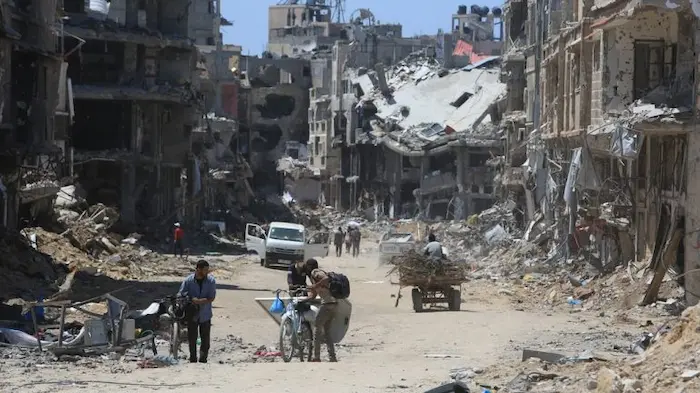
Why in News?
- India’s National Security Council Secretariat held talks with officials from the U.S., UAE, Saudi Arabia, France, Italy, Germany, Israel, Jordan, and the EU to review progress on the India–Middle East–Europe Economic Corridor (IMEC).
- The Gaza conflict has significantly disrupted IMEC’s diplomatic and operational momentum.
IMEC Overview
| Segment | Route & Components |
|---|---|
| India–Gulf Corridor | Connects India’s western ports → UAE → Saudi Arabia → Jordan → Haifa, Israel (via high-speed freight rail) |
| Gulf–Europe Corridor | Haifa → Greece & Italy (by sea) → onwards via European rail networks |
Strategic & Economic Significance
- Announced: 2023 G20 Summit, New Delhi.
- Objective: Reduce shipping times by ~40% vs. Suez Canal route.
- Trade Potential: EU is India’s largest trading partner — bilateral trade at $137.41 billion (FY 2023–24).
- Strategic Value: Enhances India’s connectivity to Europe via the Arabian Gulf; counters China’s BRI influence in the region.
Geopolitical Context
- Project planned during relative Middle East stability and momentum in Arab–Israel normalization (Abraham Accords).
- Saudi Arabia’s potential participation seen as pivotal for corridor viability.
Challenges from Gaza War
- Jordan–Israel cooperation strained.
- Saudi–Israel normalization stalled.
- Increased insurance premiums for shipping and trade through conflict zones.
- Shift from manageable logistical issues to fundamental geopolitical roadblocks.
- Broader instability tied to unresolved Palestinian statehood question.
Current Status & Outlook
- Focus has shifted to planning & trade facilitation rather than physical infrastructure rollout.
- Long-term success contingent on regional stability and diplomatic breakthroughs.
Exam Connect – Possible Questions
Prelims
1. Which of the following is/are correct regarding the India–Middle East–Europe Economic Corridor (IMEC)?
1. It was announced during the 2023 G20 Summit in Riyadh.
2. It comprises an India–Gulf corridor and a Gulf–Europe corridor.
3. It is aimed at reducing shipping times compared to existing maritime routes.
Options:
A. 1 and 2 only
B. 2 and 3 only
C. 1 and 3 only
D.1, 2 and 3
Answer: B. 2 and 3 only
Explanation: Announced at the G20 Summit in New Delhi (2023), not Riyadh. Statements 2 and 3 are correct.
2. Which of the following ports is part of the IMEC route in Israel?
A. Eilat
B. Ashdod
C. Haifa
D. Tel Aviv
Answer: C. Haifa
Explanation: Haifa is the designated Israeli port in the IMEC plan.
Mains
1. Discuss the strategic significance of the India–Middle East–Europe Economic Corridor for India’s trade and diplomacy. How has the Gaza conflict impacted its prospects?
2. Connectivity corridors like IMEC face as many geopolitical challenges as economic ones. Analyse with reference to current developments in West Asia.

